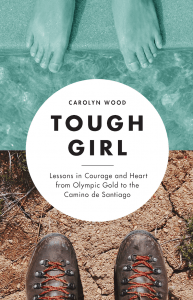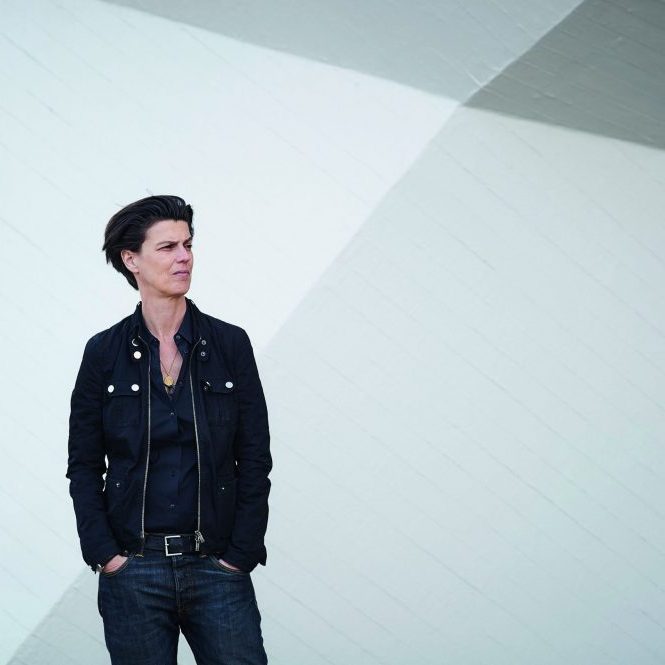 Enjoy this excerpt from an exciting new memoir:
Enjoy this excerpt from an exciting new memoir:
When my partner of thirty years decided to walk away, I hung on, my knuckles white. You can’t make me quit, I believed. “Swim to the end of the pool” is a life rule. But my rule, not hers. She left me clinging to the end of something
If you can’t stop the finale, what can you do?
You could go to bed and read for a year or dip into the bottle. You could go get that tummy tuck or lid lift and head off to the Hot Flash Dances or go online, desperately seeking Susan. I learned to knit as Rose was leaving, but that was my mother’s trick, to fill a space with wool. My mom knit sweaters, blankets, and hats, stockings, leggings, scarves, and vests, little Christmas puppets that sat atop candles, as if all that yarn could fill the empty space my father left when he disappeared to gamble—and later after he died.
Being outdoors brought me greater solace. Hiking, backpacking, treks through the Himalayas. I did them all through our two years of separation. One day a friend told me her story about selling the Herald-Tribune and busking in the Métro when she ran out of money in Paris. “What happened to that girl?” I asked, thinking of the audacity of youth. It was a good question to ponder now.
Where would I find that tough little girl I’d been who wouldn’t put her face in the water, who chased after her brother, broke the windows in Mr. Weber’s warehouse, and never cried at school—the one who played Superman and Tarzan and Sergeant Preston of the Yukon out in the backyard?
I needed to tap into the strength of that stubborn kid who wouldn’t learn to swim until she had to and who wouldn’t stop once she got started. A physical challenge, I reasoned, would get me back in touch with the gutsy girl I remembered once being, the tough one who resolved to work hard and ended up winning Olympic gold. In early June after Rose’s and my first or second meeting with the mediator, his meter ticking while we quibbled over property values and accounts, the end of our relationship is obvious. We aren’t going to finish our journey together. I pack up the car and drive south to Yosemite for the Wilderness Volunteers project I signed up for in the winter. One morning as we climb the trail to Tiltill Valley, the team leader talks about a cycling trip he and his wife took. They wandered back roads through the South for a month with only a map and a general idea, no reservations, no plans.
What an idea: head out and explore. Hut to hut, I think, remembering a dream Rose and I shared years ago when we drove through the Pyrenees in France and Spain. We would return and hike, we said. To keep our backpacks light, we’d stay in those mountain refuges, albergues, like the thousand-year-old monastery in Roncesvalle that offered free rooms to pilgrims. Now, with our separation, that plan has been scrapped.
But the idea of a journey resonates. I want to get out of town, away from all that pain. “Hit the Road Jack.” “Keep on Truckin’.” “On the Road Again.” The songs repeat in my mind while we climb toward the valley. I could walk across Spain by myself, without a partner. Why not?
I love hiking and backpacking, but at sixty-seven, I can’t carry forty pounds anymore. I’ve climbed and trekked high altitudes but always with a leader, in a group. Now I’m on my own. When the divorce becomes final in September, I’ll need to do something, something physical and hard and alone. I need to test my endurance, explore solitude, to lean into fear. The mileage—over five hundred miles—seems staggering. It will require training. . .
After a week of studying the Camino, I write to my now-grown son: Thinking hard about walking the Camino de Compostela in October and November—500 miles! What do you think? Hope my hip holds out.
The next day I buy my plane ticket.
I will walk for forty days.
I’ll try to find the gutsy girl who got her feet off the bottom and learned to swim.
When an athlete loses a race or sustains an injury or even quits for a while, the return is called a comeback. Along the Camino, I planned to practise letting go so I could stage a comeback, a return to happiness, but it’s not as easy as I hoped. I have no guide, no coach, no mentor. No one blows a whistle to start the race. No one gives a pep talk, sets the pace, or holds out her hand to pull me along. Throughout the hours of walking each day, conversations, questions, thoughts, and memories seep into my mind and play in convoluted loops. I need a strategy to quiet my mind. For long, repetitive swim workouts and for seven-hour treks, I invented coping techniques—counting laps or steps, singing a song to the rhythm of stroke or footfall, watching cracks on the pool’s bottom come and go or clouds drift up a river gorge or gather along the horizon. . .
One day when my mind became clogged, I picked up a stone and cradled it in my palm, my aim to carry it as long as the perseverating thoughts persisted. When you’re ready to set those thoughts aside, you may put down the rock. No hurry. Carry it as far as you like. You’ll know when you’re ready. I sounded like my father at Wauna Lake assuring me I’d swim when I was ready. Sure enough, the suggestion to lug a rock along with my thoughts untethered them; I noticed the stone, felt its heft, noted its colour. When I was free from brooding, I set it down beside the trail. Now, all along the way, when my mind begins to sing the same old sad songs, I bend and lift, carry and think, notice and release. It’s a tactile version of the meditation technique of labelling thoughts thinking as a way of relaxing their grip. Heaps of stones move west along the path. I’m in hard training carrying those stones, developing a new kind of tough.


